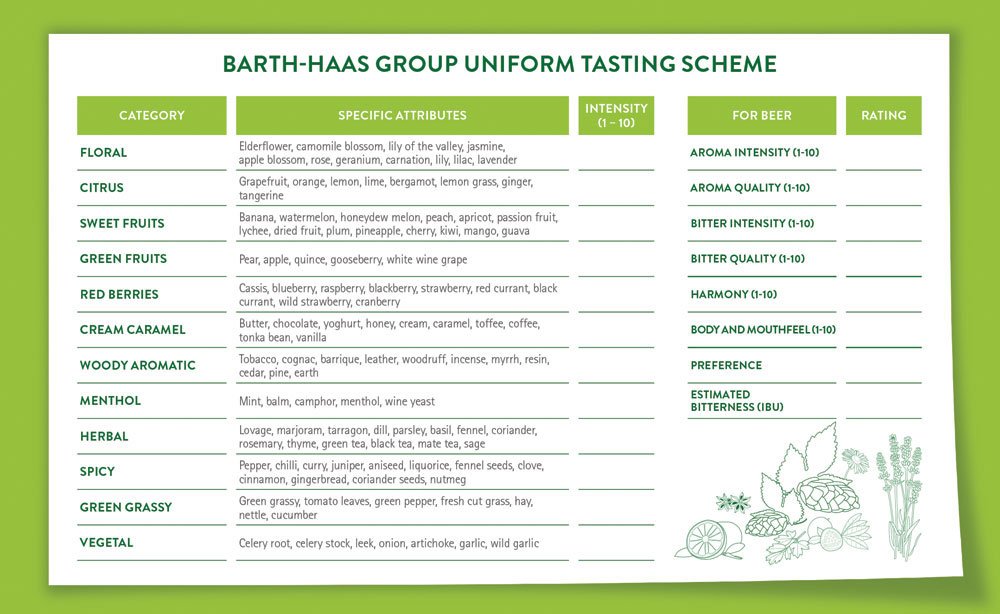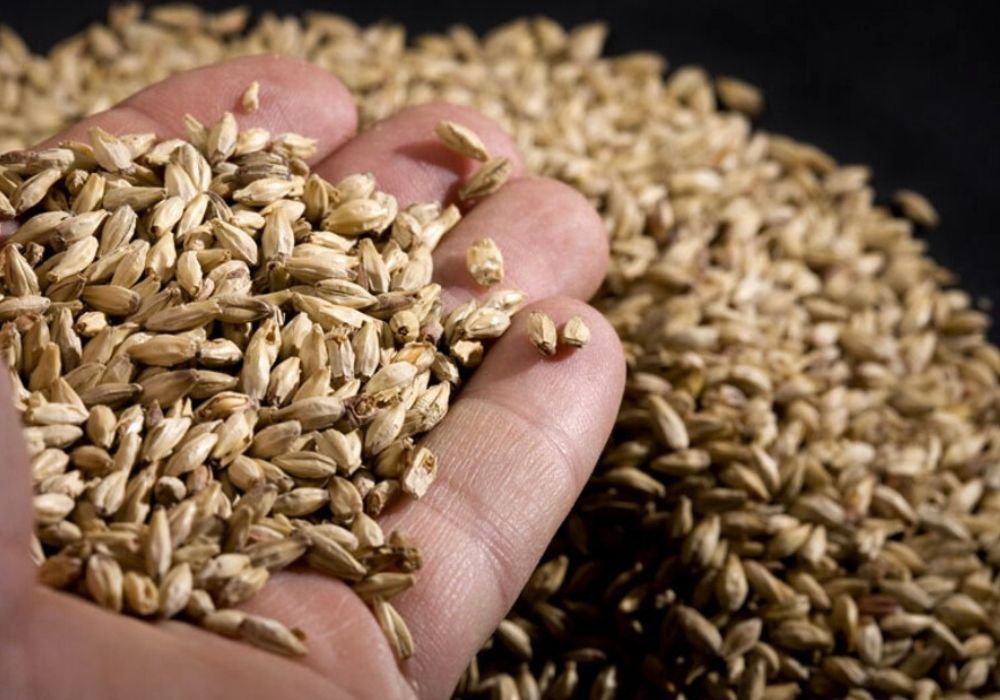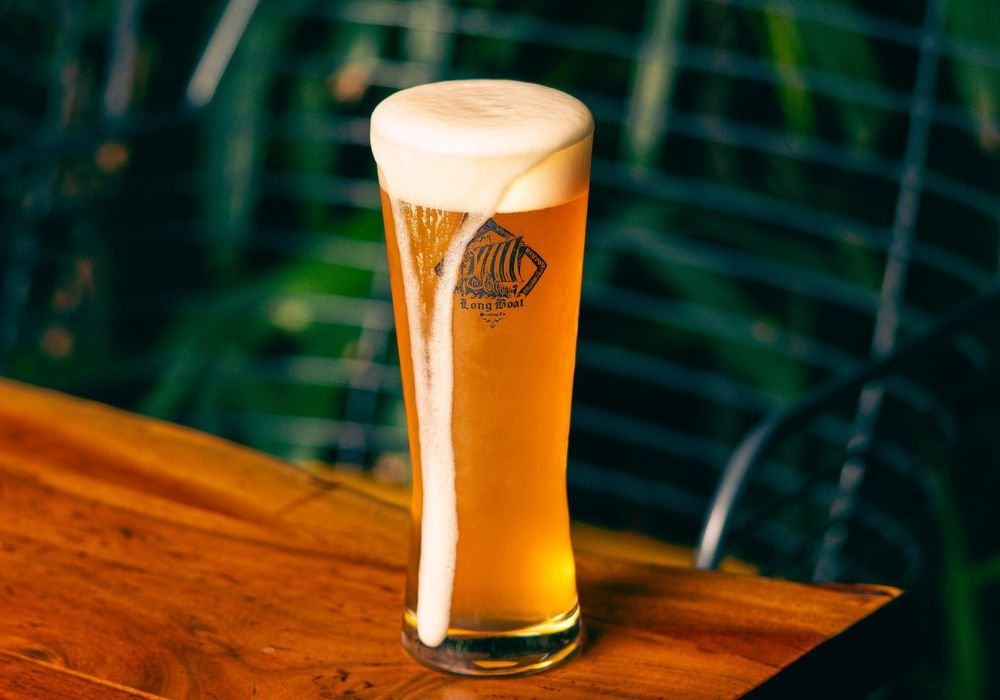Are You Hopsessed?

Dr. Elisabeth Wiesen
Technical Manager BARTH-HAAS GROUP
Dr. Elisabeth Wiesen studied food and biotechnology at the Universität für Bodenkultur (BOKU), Wien, graduating as an engineer in 2005. After her studies she worked for the Brau Union Österreich AG as trainee. She pursued her doctoral thesis work at the Chair of Brewing Technology and worked on the topic “Barley Proteins Source and Factor of Haze Formation in Beer”, graduating in 2012. She joined the Barth-Haas Group in 2011 as Manager of Technical Sales. In this role, she is also responsible for the guidance of research projects and authors hop-related professional articles.
Hops are the soul of beer
The hop is the soul of beer and sensory testing is becoming increasingly important in brewing science, in breweries, among specialists and also among consumers. Over the past ten years, the use of hops in brewing has changed fundamentally. Whereas a delicate to moderate hop aroma used to be the standard to be achieved by adding hops during the boil, today hops are being added in very high quantities not only during the boil, but also for dry hopping. Therefore, it makes sense to use a unified language to describe the hop aroma and flavour notes, maybe a sensory language based on hops. There seems to be no end to brewers’ enthusiasm to discover every hop variety in existence, and this has brought us a hitherto unparallelled – and hardly imaginable – abundance of aroma and flavour experiences.
At tastings of typical pilsner beers and lagers, descriptors such as floral, citrus, spicy and perhaps now and then grassy used to be enough. But when it comes to new beer creations, such simple descriptions don’t do justice to the hops. Many of the new “flavour hop” varieties like Citra®, Mosaic®, Galaxy™, Mandarina Bavaria, Monroe or Relax don’t allow an accurate evaluation with e.g. only five descriptors as it was done for a long time. If one uses only “citrus”, “floral”, “hoppy”, “fruity” and “herbal”, this is nowadays not enough information to assess the aroma and flavour of these intense hop varieties.
With the help of flavourists and beer sommeliers, we have developed a tasting scheme for hops and hoppy beers that works with defining intensities for twelve aroma categories and identifying specific aroma attributes. This tasting scheme results in a defined aroma profile for the relevant hop variety or beer. It is meant to help speak the same language about hops so that an easier comparison of hop varieties and hoppy beers in a sensory context is possible.
Hopsessed is the sensory teaching program of the Barth-Haas Group – set up as part of the Hops Academy. Everybody who is interested in can attend our Hopsessed seminars and learn how to evaluate and describe hops and hop aroma in beers.
Everybody talks about aroma: hop aroma, beer aroma other aromas. But how do we define these different aromas. How can we predict, or follow the hop aroma into the final beer? Some of these secrets will be resolved in this article
- Aroma = any property detected by the olfactory system
- Olfaction is the sensation caused by volatile compounds reaching the olfactory epithelium
- Odor (=aroma) thresholds can be defined as the lowest concentration of a compound in a certain matrix that is sufficient for recognition
- Recognition of an odor is the comparison of sensory contacts from the surrounding with similar ones kept and stored in memory
- Introduction of an odorant above certain threshold triggers a response to the stimulus
If we discuss about aroma we also must factor in flavour. Because flavour is the sensation realized when a food or beverage is consumed, and the overall sensation of flavour is the result of a combination of responses to receptors present on the tongue and in the mouth, throat and nose. Flavour is the complex combination of the olfactory, gustatory and trigeminal sensations perceived during tasting (International Organization for Standardization, ISO 5492:2008; 2008, “Sensory analysis – Vocabulary”)
It is well known that the brewing process has a significant influence on the aroma and flavour expression of a hop variety in beer. The main influencing parameters are time and amount of dosage, yeast strain, fermentation parameters, contact time (for dry hopping), and the filtration process. Even the raw hops show different aromas from year to year or batch to batch due to different growing conditions (this is mainly soil, temperature, precipitation, occurrence of pests & diseases, time of harvest, hop drying and processing, and of course hop and hop product storage).
So it is recommended to not only look at the aroma profile of raw hops, but also to evaluate the hop flavours in beer – and if possible not only in “a” beer, but in “the” beer to which the hops of choice shall be dosed to! This means more work but is crucial to get all the relevant information.
In other sectors like in the wine and food industry, it is common to talk about aromas and flavours with a kind of special language to describe these flavours. But it is difficult to state what is the correct number of aroma classes. Aroma compounds create the sensory impressions that we call smells. Both the stimuli and the impressions triggered can be classified, even if the approaches so far have tended to be less than satisfactory. One early approach was devised by Linnaeus (1756) who published a classification scheme based on the names of individual plants. All the classifications published to date work with 4 to 44 categories. In 1968, Harper established a characterisation system for the food industry based on 44 odour notes. Later, various companies and institutions selected approximately 160 of the 800 more frequently used descriptors which they considered suitable for characterisation. The currently accepted standard 146 descriptors (Harper‘s Scale) were published in the Atlas of Odor Character Profiles in 1985.
Unlike visual impressions, olfactory experiences remain in our memories much longer and are often stored together with an emotion or an occurrence and a positive or negative evaluation. Until recently, scientists believed that the human sense of smell was less strongly developed in comparison with that of animals. In 2014, however, it was proved that humans can perceive up to one trillion different aroma impressions, but are just not able to describe them all.
Aroma Categorization
In order to set up a suitable aroma categorization for hops, we were supported by a professional perfumer, Frank Rittler. For flavour description and the development of new perfumes, he uses 16 categories: Floral, Chypre, Fougere, Ozonic, Oriental, Woody, Spicy, Mint, Herbal, Green, Gourmande, Fruity, Citrus, Camphoraceous, Animalistic, Aldehydic. This existing categorization was the basis for us to develop a new one –reworked and adjusted to hop flavours. The number of categories was reduced from 16 to 12. The following graph shows these main categories, together with one example of a hop variety. These hop varieties are goodrepresentatives of and show strong flavours that fit well into the relevant category; example, the hop variety Mandarina Bavaria has very intense citrus flavours.


Descriptors and further Attributes
The main descriptors already help us to define the main aroma and flavour of hop varieties. For a more detailed description, it is necessary to take a closer look at further attributes present in the flavour.
At first glance, there are some attributes that don’t remind someone of hops, however, all of these were found in one or more hop varieties available.
Intensities of these attributes are to be rated on a scale of 0 to 10. For beer evaluation, additionally other specified attributes, the overall intensity of aroma and bitterness, bitterness units, bitterness quality, harmony, and body & mouthfeel can be useful information to describe the overall quality of a hop variety.
More hoppy beers and new intense hop varieties urge for a more detailedevaluation and description of hop aroma and flavour, both in raw hops, and in beers. By setting up this new aroma categorization, there are new and better options to do so. The big advantage is that this can be a common language and everybody talks about hop aroma in the same way.
The results gained by this new way of hop evaluation can be presented in the form of spider graphs, as a text, or a nice combination of both – it depends if one prefers information at a glance or a comprehensive and detailed description. When this scheme is used, distinct and comparable aroma profiles are produced for the respective hop variety or beer. The result is a common sensory language about hops that makes it easier to present comparisons of hop varieties and hop intensive beers.
This can be remedied: the BARTH-HAAS GROUP Hops Academy now offers appropriate training courses as part of its Hopsessed programme. Participants will learn how unique each hop variety is and how many suitable descriptors can be discovered in the depths of the hop aroma. The joy of discovery, training and, above all, passion are the prerequisites for learning to speak fluent “Hoppish” in next to no time.



